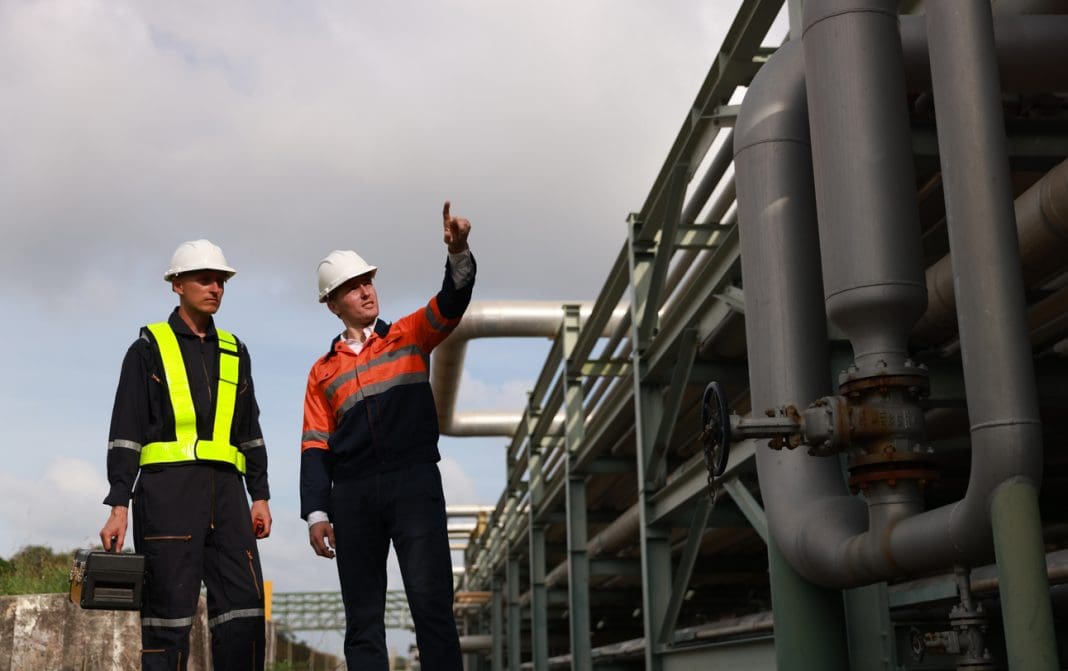Steven Hardman, CEO, Conrad Energy, investigates how on-site energy generation can help businesses reduce reliance on their local grid and boost their own energy efficiencies
On-site power generation holds many advantages for businesses seeking to take control of their energy. Firstly, it offers autonomy and resilience.
Through generating electricity on-site through renewable sources like solar panels or wind turbines, businesses can reduce their dependence on external energy providers and insulate themselves from the volatility of utility prices and grid disruptions.
This translates into greater stability and predictability for operational costs, enhancing financial resilience.
On-site power generation contributes to sustainability and net-zero goals
Secondly, with growing environmental concerns and tightening regulations, businesses are under increasing pressure to reduce their carbon footprint. By embracing energy solutions powered by clean, renewable sources, companies can significantly shrink their environmental impact and increase their reputation as responsible corporate citizens. This alignment with sustainability objectives not only benefits the planet but also resonates positively with customers, investors, and other stakeholders.
Thirdly, generating your own energy can offer significant cost savings over the long term. While the initial investment in renewable infrastructure may be substantial, the energy costs are typically lower than relying solely on grid electricity. Being able to plan ahead with certainty on energy costs is a definite advantage. Moreover, with advancements in technology and decreasing costs of renewable energy systems, the return on investment for energy projects is becoming increasingly attractive. Businesses stand to benefit from reduced energy bills, potential revenue from selling excess energy back to the grid, as well as opening up the potential for various financial incentives and tax credits available for renewable energy investments.
Businesses may prefer to consider fully-funded on-site generation solutions offered by some energy companies. These remove the capex costs, which not only require serious financial commitment but also reduce your working capital. The energy provider will take on the funding of the build and maintenance of the project, with the property owner simply signing a Power Purchase Agreement or contract to buy the energy the asset produces over the long-term at a pre-agreed rate – saving money and providing price stability.
Reducing reliance on the local grid
The local grid is a crucial component of the energy infrastructure, however it is not without its vulnerabilities. From extreme weather events to cyber-attacks and equipment failures, the grid is susceptible to disruptions that can have far-reaching consequences. As such, reducing reliance on the local grid is not just a matter of convenience but a strategic imperative to ensure business continuity and resilience.
On- or near site solutions provide a lifeline for businesses looking to shore up their energy security. By decentralising energy production and storage, companies can mitigate the risks associated with grid outages and supply chain disruptions. This decentralised approach also enhances the overall stability and reliability of the energy system, reducing the likelihood of widespread blackouts and minimising the economic impact of energy-related disruptions.
Furthermore, reducing dependence on the local grid can alleviate strain on infrastructure and help mitigate the need for costly upgrades and expansions. As the demand for electricity continues to grow, particularly in urban areas and regions experiencing rapid population growth, the existing grid infrastructure is being stretched to its limits. By investing in on-site energy solutions, businesses can ease the burden on the grid and contribute to a more resilient and sustainable energy ecosystem.
Unlocking value for energy intensive buildings
Energy intensive buildings, such as manufacturing facilities, data centres, and commercial properties, stand to gain significant value from behind-the-meter energy solutions. These facilities typically have high energy demands and are therefore disproportionately affected by fluctuations in energy prices and grid reliability issues.
One of the key advantages of on-site generation for energy intensive buildings is the ability to optimise energy consumption and reduce costs. By generating electricity on-site and leveraging energy management systems, businesses can better control when and how they use energy, thereby minimising peak demand charges and optimising overall energy efficiency. Additionally, on- or near site energy solutions can help mitigate the risk of production disruptions and downtime associated with grid outages, ensuring uninterrupted operations and maintaining productivity levels.
Generating your own energy can offer energy-intensive buildings greater flexibility and resilience in managing their energy needs. By integrating renewable energy sources with energy storage systems, businesses can store excess energy generated during periods of low demand and use it during peak times or in the event of a grid outage. This ability to operate independently provides a valuable layer of security and ensures continuity of operations, even in challenging circumstances.
Key considerations for implementing on-site energy generation
Every business is different and has their own considerations, including carbon objectives, budget and space. While generating your own energy offers a range of benefits, it is not a one-size-fits-all solution, and different options may be more suitable for different sites and industries.
Firstly, businesses must assess their energy needs and consumption patterns to determine the most appropriate on- or near site energy solutions for their facilities. Working with an energy expert will help to determine what is possible. Factors such as location, available space, energy requirements, and budget will all influence the choice of renewable energy technologies, such as solar photovoltaic (PV) systems, wind turbines, or combined heat and power (CHP) systems.
Secondly, businesses should consider the regulatory and policy landscape governing energy in their region. With councils increasingly working towards net zero targets, support for companies investing in renewable energy generation and storage can help to increase the possibilities of on- and off site generation.
Thirdly, businesses must evaluate the financial implications of energy investments, including upfront capital costs, ongoing maintenance expenses, and potential savings and revenue streams. A comprehensive financial analysis, including ROI calculations and cash flow projections, can help businesses make informed decisions and secure financing for their energy projects. Energy companies that offer fully funded installations is one route to reduce capex outlay whilst enabling businesses to embrace the wider benefits of on or near site energy generation.
On- or near site energy holds immense promise for businesses seeking to take control of their energy future, reduce reliance on the local grid, and unlock value from their energy assets.
By embracing energy solutions tailored to their unique needs and circumstances, businesses can enhance their resilience, sustainability, and competitiveness in an increasingly uncertain world.
Steven Hardman 
Conrad Energy

















